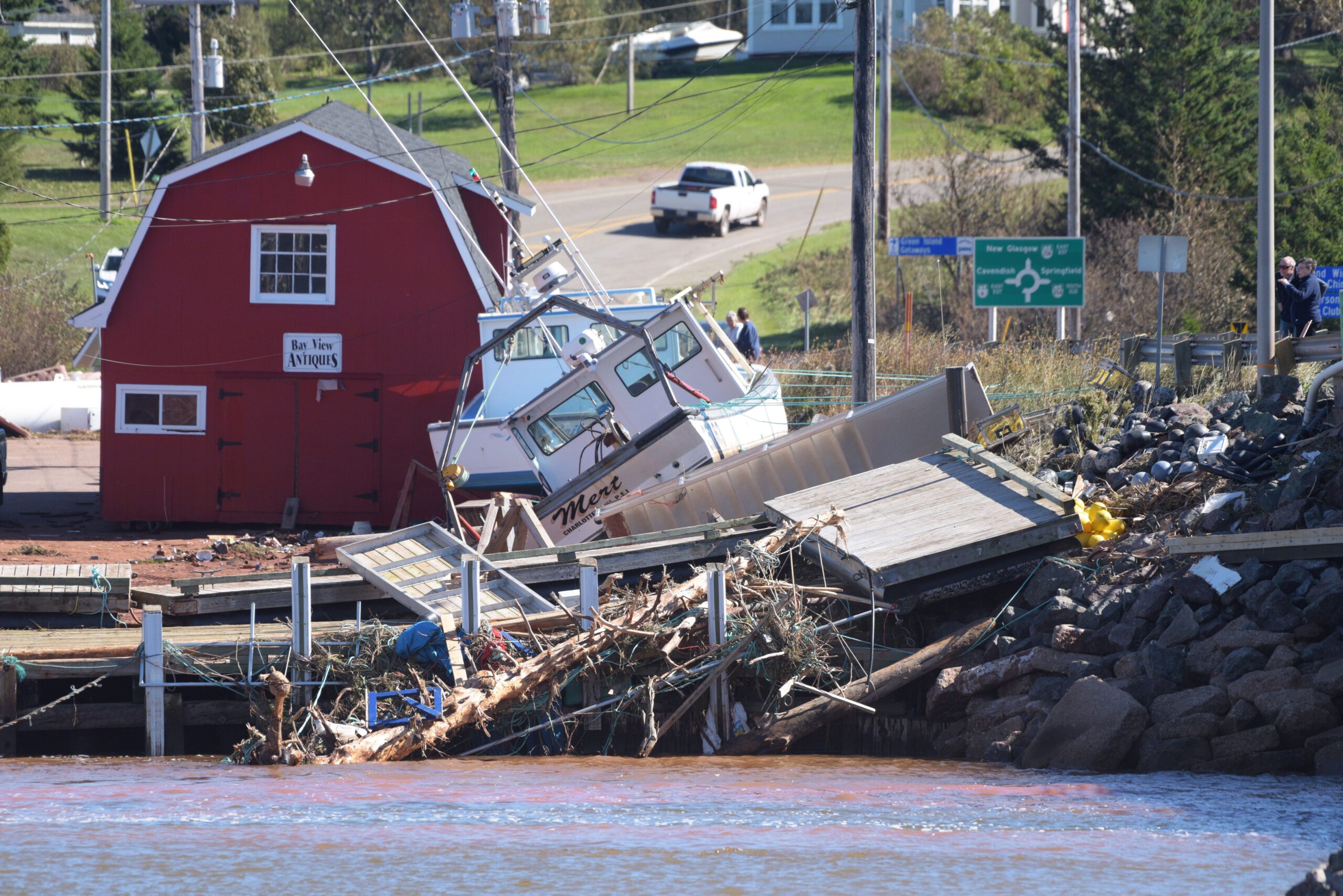Tropical systems often strengthen in warmer areas of Atlantic, but can also intensify elsewhere in certain conditions
Late last week, Canada’s Atlantic coast was hit by Hurricane Fiona, with maximum sustained winds in the region of 90mph (145km/h). Hurricanes rarely maintain such an intensity that far north. Why? Hurricanes are fuelled by high sea surface temperatures (SSTs), and ideally high sea temperatures over a large depth. As you move away from the tropics, SSTs typically reduce.
But hurricanes are not confined to the warmer areas of the Atlantic, such as the Gulf of Mexico and the Caribbean Sea. Tropical systems often strengthen in these regions, but can sometimes sustain or even strengthen elsewhere given favourable conditions. Ocean currents can transport warmer water poleward which can produce regions at higher latitudes that have higher SSTs than their surroundings. Tropical systems that track northwards over warmer seas can maintain intensity or even strengthen, such as happened with Hurricane Fiona.
Fiona was first classified as a tropical depression on 14 September, strengthening to become a hurricane early on 18 September. The hurricane made landfall in Puerto Rico later that day with maximum sustained winds of 85mph (140km/h), also affecting the Dominican Republic as it curved northwards. Fiona continued to strengthen over the next two days as the storm travelled over water that was warmer than average, reaching category 4 status early on 21 September.
Over the next couple of days, Fiona remained a major hurricane as she moved north-northeastwards. Typically, hurricanes curve eastwards as they reach higher latitudes. But interactions with other weather systems can help “pull” systems such as Fiona northwards or even westwards. Fiona began to interact with an upper-level trough on 23 September and the hurricane accelerated towards Nova Scotia. Although SSTs are much lower near Nova Scotia than farther south, they are currently more than 2C higher than average, likely helping Fiona maintain hurricane-force winds.
Hurricane Fiona is not the only storm causing havoc, with the arrival of Ian in the Caribbean and south-eastern US. Ian began life as a tropical storm in the Caribbean, strengthening to hurricane status on Monday, and is expected to become a major hurricane on Tuesday. Sustained wind speeds are likely to exceed 110mph ( 177km/h) at its strongest, with the track of Ian heading for Florida and making landfall on Friday morning.
Source : The Guardian









